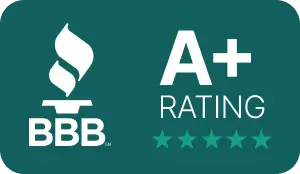Understanding the Roots of Inheritance Shame
Few life events evoke such conflicting feelings as receiving an inheritance. Grief mingles with relief, gratitude collides with guilt, and a nagging voice often insists that using any portion of the estate before the court signs off is somehow “wrong.” This self-imposed stigma—inheritance shame—can push heirs into financially damaging positions: draining personal savings, leaning on high-interest credit cards, or ignoring critical bills while probate grinds on for months. Recognizing that a temporary infusion of liquidity can actually preserve family wealth is the first step toward healthier decision-making.
Liquidity vs. Morality: Debunking the False Dichotomy
Shame thrives on the belief that tapping an estate early is indulgent. In reality, a carefully structured probate advance is neither reckless nor wasteful. Because repayment comes solely from the eventual distribution, there is no personal guarantee, no compounding interest, and no risk of bruising a credit score. By treating an advance as a bridge—not a windfall—heirs can satisfy immediate obligations and avoid forced sales that might shrink the estate’s overall value.
Protecting Public-Benefit Eligibility
One common worry is that early access to funds could jeopardize crucial assistance programs. With thoughtful planning, however, heirs can keep maintaining public-benefit eligibility while still covering uncovered medical or caregiving costs. An advance structured outside income calculations ensures Medicaid recipients stay within program limits, turning what might feel like a moral tightrope walk into a straightforward compliance exercise.
Tackling Modern Debt Burdens Head-On
For younger heirs, inheritance shame often hides behind spreadsheets of student loans and rising housing costs. Rather than suffer in silence, younger heirs juggling student loans can treat an advance like a responsible refinance—swapping double-digit interest rates for a one-time, estate-based fee. The result is lower monthly outflow, better credit utilization, and less stress during an already difficult chapter.
Turning a Legacy Into Strategic Capital
Not every beneficiary is in crisis. Some see the family estate as seed money for future growth—a rental property, franchise, or diversified portfolio. Yet opportunities rarely wait for probate to close. By turning a legacy into strategic capital, investment-minded heirs can lock in market entries on their timeline instead of the court’s. When approached with clear ROI targets, an advance becomes a tool of stewardship rather than a shortcut.
Stabilizing Irregular Income Streams
Freelancers face a different flavor of shame: the fear of appearing unprofessional if cash flow fluctuates while an estate is in limbo. For self-employed beneficiaries, an advance can cover quarterly taxes, equipment upgrades, or even health-insurance premiums, allowing them to deliver consistent client service without revealing personal financial turbulence.
Balancing Head and Heart
Families frequently grapple with whether to hold or liquidate sentimental assets. The dilemma intensifies if there is no money to maintain a property, pay property taxes, or insure valuable heirlooms. Accessing funds early buys time for balancing head and heart—time to arrange appraisals, gather sibling consensus, and honor the decedent’s intent. In this context, liquidity nurtures family harmony rather than eroding it.
How an Advance Works in Practice
- Application & Estate Review
The funding company coordinates with the executor to confirm asset values and creditor positions—no invasive credit check required. - Offer & Acceptance
Heirs choose how much of their eventual share to access, often only a fraction. Fees are transparent and fixed. - Disbursement in Days
Funds arrive quickly, wired to personal accounts or delivered as estate-paid expenses such as tax bills or mortgage installments. - Repayment at Distribution
When probate closes, the advance plus the agreed-upon fee is deducted from the heir’s share. If the estate is smaller than expected, the funding company absorbs the loss—another safeguard against personal risk.
Addressing the “What Would Mom Think?” Question
Many heirs worry that their loved one would disapprove of “touching the money too soon.” A more helpful lens is stewardship: would Mom prefer a cherished home fall into foreclosure, or would she endorse using part of its future value to protect the rest? An inheritance advance reframes early access as proactive asset management, not disrespect.
Building a Supportive Mindset
Shame isolates; responsible planning connects. Discuss intentions openly with co-beneficiaries, involve financial advisors, and document the reasoning behind each decision. When everyone understands that an advance prevents larger losses—whether interest accrual, penalties, or rushed sales—guilt gives way to collective confidence.
When an Advance Is Not the Answer
If living expenses are manageable, debts are minimal, and the estate is likely to close in under six months, waiting may indeed be wiser. The key is to evaluate, not assume. Responsible heirs weigh cost, timing, and emotional well-being against the fee, then choose the path that best preserves both assets and peace of mind.
Conclusion: Choosing Confidence Over Secrecy
Inheritance shame fades when heirs treat liquidity as a legitimate financial instrument rather than a taboo shortcut. Whether the goal is safeguarding Medicaid benefits, conquering student debt, seizing an investment window, or smoothing freelance income, an advance can transform vulnerability into stability. By aligning action with responsibility, beneficiaries honor their loved one’s legacy—and their own future—without apology.








